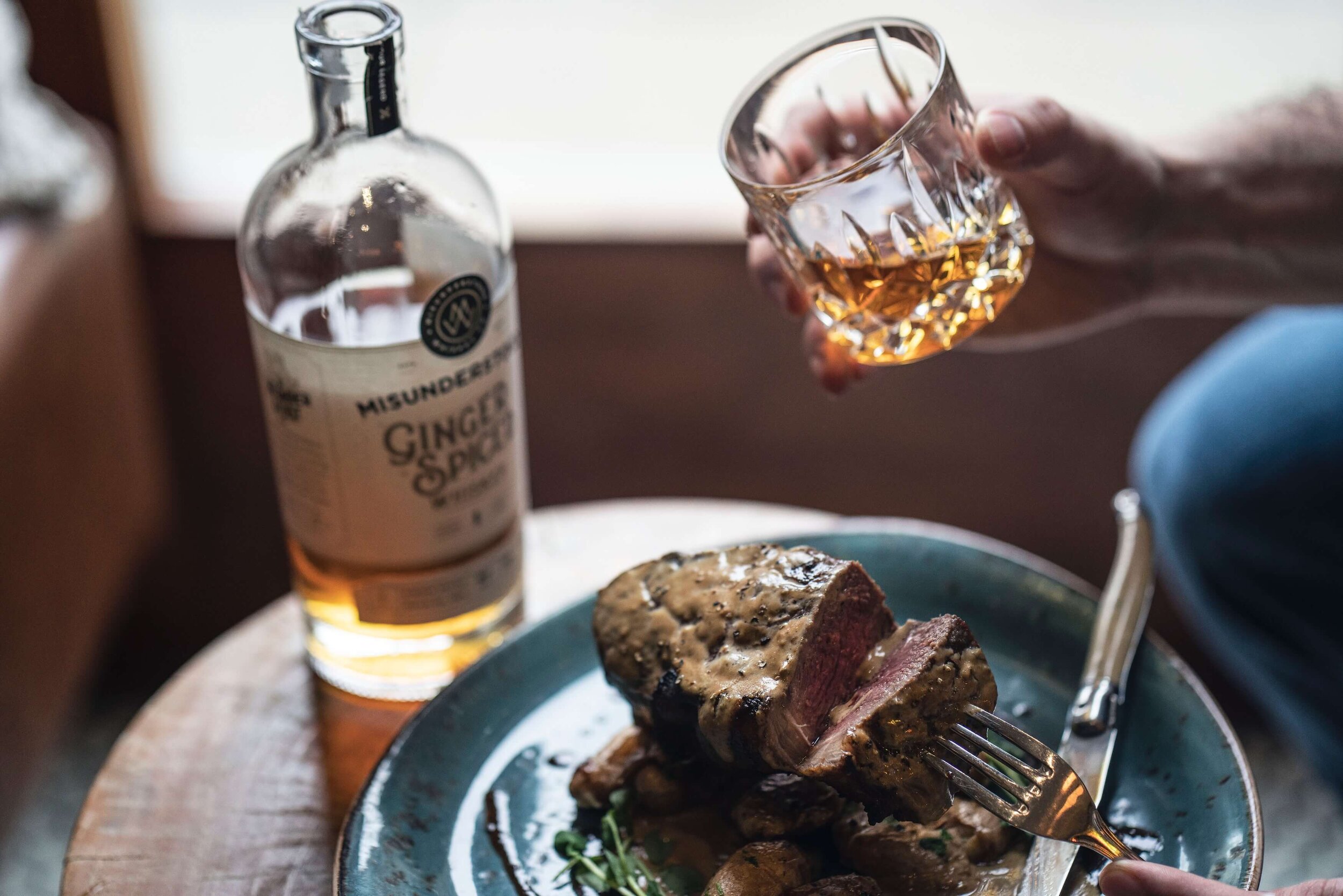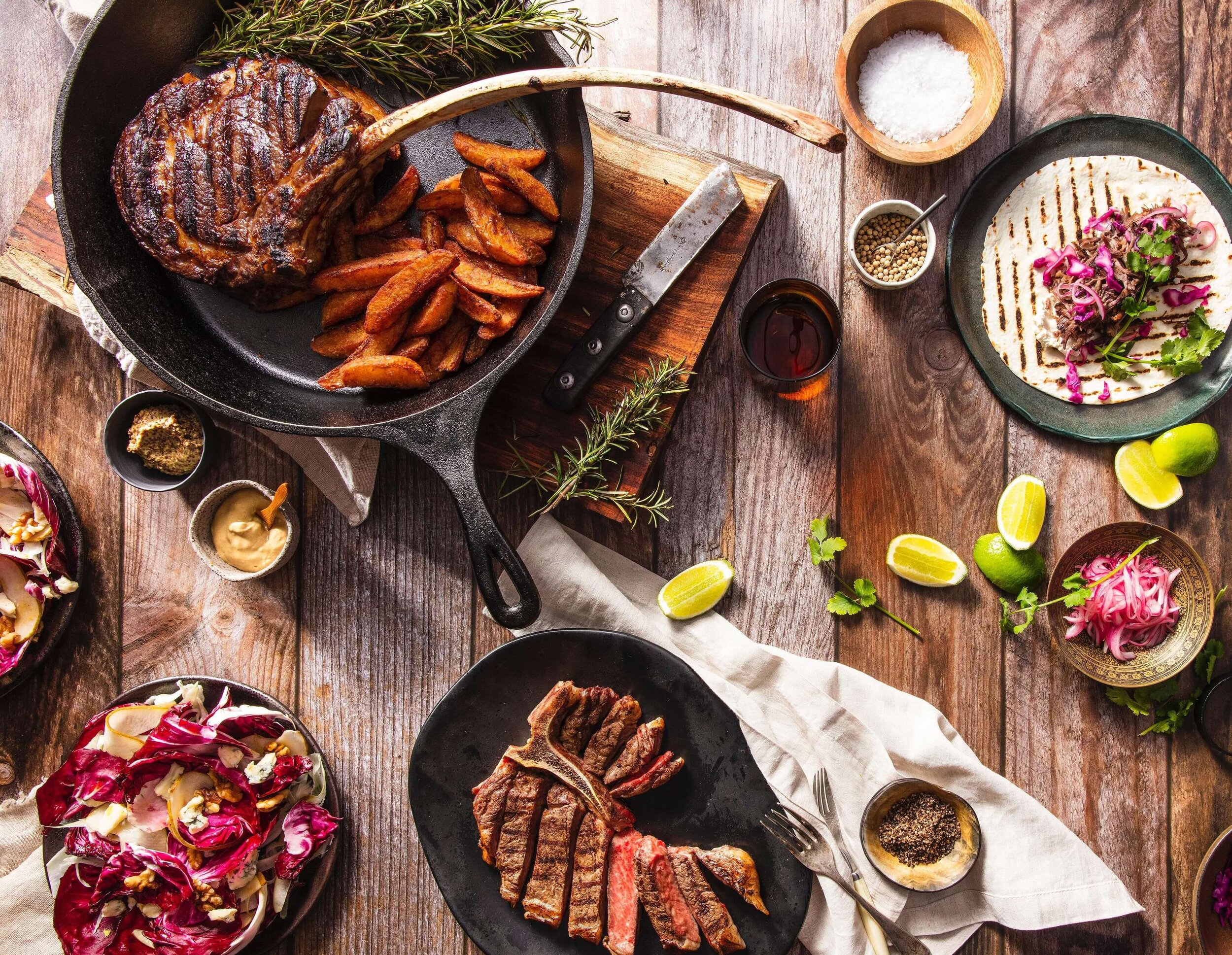7 Smart Ways to Make Whiskey and Food Pairing Magic
No need to switch to merlot after your pre-dinner Manhattan; here’s how to drink a dram throughout the entire meal
If the only thing you’ve ever considered pairing with whiskey is an ice sphere, sweet vermouth or a bowl of mixed nuts, you’ve been missing out. Global whisk(e)y, whether it be delicate Speyside, sweet bourbon, spicy rye, unabashedly peaty Islay, or another category, touts such a depth and breadth of nuances for all kinds of savory fare. Add to that the fact that many expressions are finished in casks previously used to mature wine, and the synergy is unmistakable. Go ahead: make the switch at the table from grape to grain.
Consider the Course
To kick things off at the start of a meal, Ramsey Musk suggests a round of Highballs, which the beverage director at Guerrilla Tacos in Los Angeles deems “a perfect way to not only lighten the whiskey, bring the flavors to life, and wake up the palate.” Follow that with a Whiskey Sour or Crusta for lighter courses that appear earlier on, and flights for the entrees, which give diners the chance to compare different spirits from a distiller’s portfolio, and show just how they play off, say, pasta or roasted chicken. “It ends up being a bit more fun for them to parse through their own palate and seeing what they pick up vs. their companion,” he adds.
If you are new to whiskey (or new to pairing it with food), it’s helpful to set out both small pours and whiskey cocktails to pair with food, according to Allison Strunk, general manager of King + Rye, a Southern cuisine-inspired and whiskey-focused restaurant in Alexandria, Virginia. At your next gathering, have everyone bring their favorite whiskey, and set out small tasting glasses to encourage experimentation.
Match Styles
Similar to the strategy of pairing wine, Strunk says to consider a whiskey’s style, rather than what category it belongs to; in general, sweeter whiskeys go well with spicy fare, lighter ones with seafood and full-bodied expression with rich, well-flavored dishes. Take meat, for example. “A smooth bourbon aged in a cabernet cask like Jefferson’s Reserve Pritchard Hill Cabernet Cask Finish pairs beautifully with lean grilled beef, [while] Scotch with more peat would need dishes with bold smokiness such as dry-aged beef or duck.”
Rye Whiskey & Bourbon with Smoky Meat
Rye whiskey cuts through fatty cuts of beef like ribeye, and Strunk really loves it with smoked meats. “The assertive spice that comes from the rye stands up to low and slow smoked brisket and pork,” she believes. If you choose to slather on a barbecue sauce or coat the cut with a spice rub, select something slightly sweeter, like a high-rye Bourbon, which will complement without overpowering. Looking for a high rye bourbon? Check out NY International 2021 Gold Winner Redemption Barrel Proof High Rye Bourbon.
Peated Scotch with Citrus & Spice
If a dish has citrus notes, it’ll cozy up to the smoky saltiness of peated Scotch, according to Steven Lewis, head bartender at Bar Belly in New York; try it with chicken piccata or lemon pepper pork chops. Well-seasoned dishes like Senegalese chicken yassa or General Tso’s chicken easily meld with a peated single malt from Islay or Isle of Skye, like the tropical fruit nose and dry, red chili finish of Talisker Storm or The Classic Laddie Scotch by Bruichladdich .
The Salinity Factor & Seafood
The saline note of seaside Scotch also works alongside brinier varieties of raw oysters. Talisker Whisky offered a virtual whisky and oyster pairing, sharing three ways to enjoy the beverage with bivalves: eschewing mignonette or hot sauce for a few drops of whisky dribbled directly on top of the oyster, using the empty shell as a shot glass for a half-ounce whisky chaser, or washing down the oyster with a more ample neat pour. However, when shucking milder varieties like Kumamoto that have a creamy body and melon- or cucumber-like finish, Lewis recommends a single malt from Speyside, perhaps Aberlour 12 Year these whiskies tend to have a more delicate character and a clean finish, rather than the smokiness or iodine tinge that comes from peated offerings.
Since oysters and stout are also a classic pairing, it makes sense that they would also partner with a stout cask-finished whiskey, Musk says, citing Westward Stout Cask American Single Malt Whiskey, for one. “The salinity of the oyster and the chocolate notes that come through in the whiskey are delightful,” he says, adding while the expression is heavier in body and flavor it’s not oily on the palate, so the clean ocean notes of the seafood shine through.
Whiskey with Cheese
Since American single malts as well as their Scotch counterparts are often finished in barrels that previously held dry or fortified wine, they have a natural affinity for cheese. Musk likes the autumn fruit and rich nutty notes in Westward Pinot Noir Cask; Deanston 9 Year Old Bordeaux Red Wine Cask Finished and Bunnahabhain Moine Bordeaux Red Wine Cask Matured are two great options from across the pond. But soft, mild cheeses like burrata and mozzarella are better served by something less showy on the palate, perhaps an easy-drinking Irish whiskey like Green Spot or Teeling Single Grain. Strunk says Bourbon is a winner with mild cheddar, complementing rather than competing with the cheese.
Bourbon and Miso
Speaking of Bourbon, one savory pairing that might come as an initial surprise are dishes containing miso, but it actually makes quite a bit of sense, Musk says. “Miso makes a great caramel, so it is a no-brainer that Maker’s Mark is a great pairing with its vanilla and caramel forward flavors”; try it with miso-glazed black cod or salmon.
While Lewis agrees with the philosophy of echoing the flavors of a dram and a dish, he also cautions against being too matchy-matchy. “You want a chord, not a single note.” And as with wine, while “it’s natural to think mostly about the main component of the plate, keep in mind there will always be secondary and tertiary flavors,” all of which can affect the overall taste. Cheese boards have jam and honey; meat may be salted, marinated, or dry-aged and served with sauces, herbs, or accents; oysters served on that platter of crushed ice will also arrive with lemon, hot sauce, mignonette, or horseradish. Pairings that might not have been as obvious can work wonderfully with the ingredients already meant to enhance the dish,” he says. “Think of the drink as an additional ingredient to what you’re cooking.”







